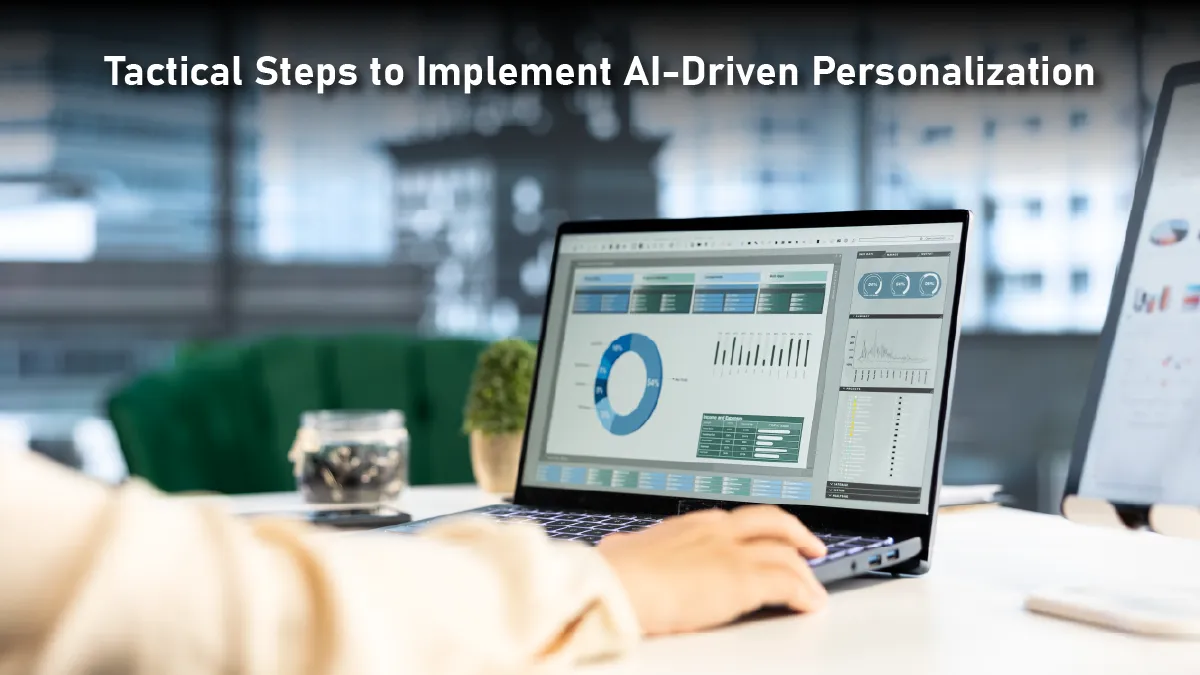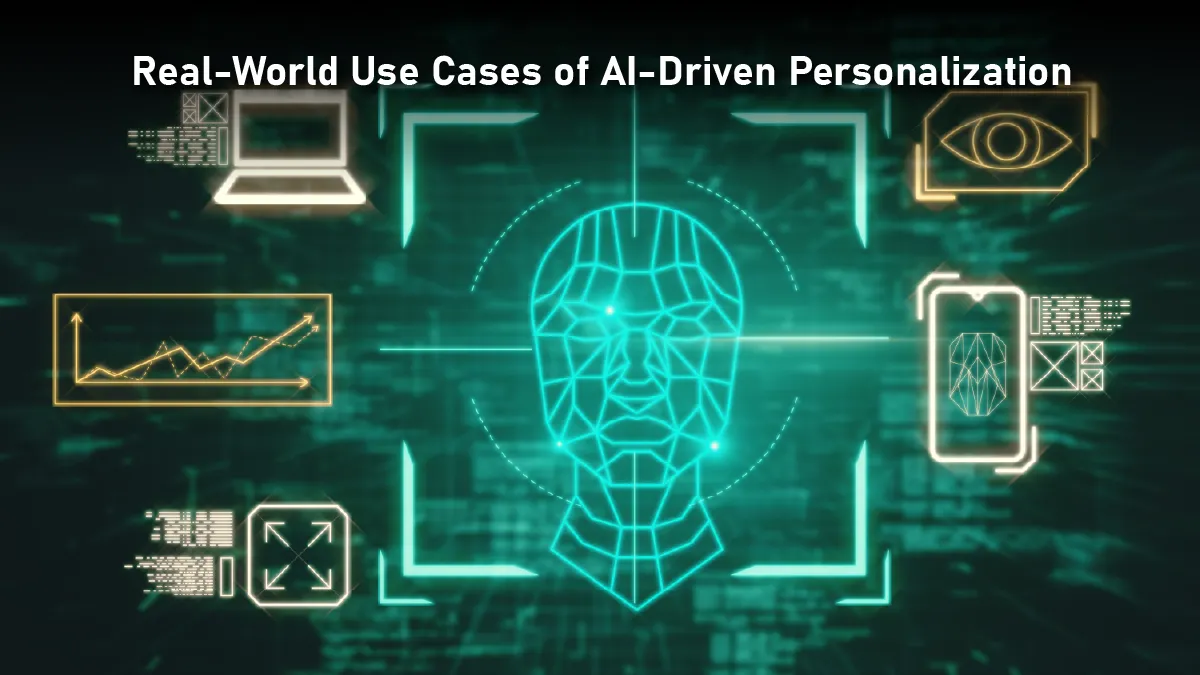In today’s digital age, brands need to give customers personalized experiences. People want services that match their tastes, habits, and needs. Personalization isn’t a luxury anymore – it’s a must-have. A study by McKinsey shows 71% of consumers want personalized interactions from companies. And if they don’t get it, 76% get annoyed. Brands that personalize effectively make 40% more revenue than their rivals.
AI is changing marketing. Now, businesses can personalize like never before. AI-driven personalization lets brands deliver customized content, offers, and experiences to many people simultaneously. It keeps a human touch too. This playbook shares tactical steps, AI tools, and real-world examples. It helps businesses use martech solutions to implement personalization on a large scale.
The Imperative of Personalization at Scale
Why Personalization Matters
To grab the audience’s attention, personalize experiences for each person. This should happen on all platforms, like websites, apps, email, and social media. This boosts customer engagement, conversions, and retention. It helps us meet their expectations and build brand loyalty. They expect a consistent experience everywhere. Generic messaging no longer resonates; consumers demand relevant and timely interactions. Personalization boosts customer loyalty and builds long-term brand connections.
Challenges of Scaling Personalization
While personalization can drive tremendous value, implementing it at scale presents several challenges. A big problem is data silos. Customer data gets spread across different systems. This makes it hard to build a complete customer profile. Personalization needs a lot of dynamic content for different audience segments. This can take up many resources. Privacy concerns create challenges. Regulations like GDPR and CCPA require careful handling of customer data. Many organizations find it hard to integrate AI. They often lack the right infrastructure and expertise to use AI for personalization well.
Tactical Steps to Implement AI-Driven Personalization
 Data Collection and Integration
Data Collection and Integration
Businesses must aggregate data from multiple touchpoints to personalize experiences at scale. Key data sources are website behavior, transaction history, customer support chats, and social media activity. Combining data from these sources creates a complete customer profile. Customer Data Platforms, such as Salesforce CDP, Segment, and Synerise, eliminate silos. They give a complete view of the customer.
Data Analysis and Segmentation
Once data unifies, AI can spot behavior patterns. It segments customers into meaningful groups. Demographics, psychographics, purchase behavior, and engagement levels define these groups. Adobe Sensei and Google AI’s AI-powered tools accurately segment data. By using this segmentation, businesses create focused marketing campaigns. These campaigns increase engagement and improve conversion rates.
Predictive Analytics and Customer Insights
AI’s predictive capabilities enable marketers to anticipate customer needs before they arise. Predictive analytics uses past data to predict when people will buy, leave, or engage best. AI models analyze large datasets quickly. They spot trends and offer smart recommendations. Netflix uses AI to predict what users like. It suggests content based on their viewing history. This helps keep users engaged.
AI-Driven Content Personalization
Dynamic content personalization adjusts messages and offers instantly. It relies on user intent, context, and behavior triggers. AI tools can adjust website content, email campaigns, and digital ads dynamically. Dynamic Yield offers real-time content recommendations. Persado creates AI-driven marketing copy to boost engagement. AI helps businesses personalize content. This makes it more relevant and effective. As a result, customer satisfaction and conversion rates go up.
AI-Powered Automation and Continuous Optimization
AI-driven automation powers efficient personalization at scale, allowing businesses to thrive. Using marketing automation tools like HubSpot, Marketo, and Braze helps companies. They can use AI to make customer interactions easier and tasks more efficient. They allow companies to set triggers that respond to customer behavior. AI keeps improving campaigns. It looks at engagement metrics, conversion rates, and A/B testing results. This iterative process ensures marketing efforts remain data-driven and effective.
AI Tools for Hyper-Personalization
Several AI-powered tools enhance hyper-personalization across different marketing functions:
– Customer Data Platforms (CDPs): Segment, Salesforce CDP, and Synerise combine customer data into one profile.
– AI-Powered Recommendation Engines: Amazon Personalize and Algolia Recommend quickly suggest products and content.
– Chatbots and Virtual Assistants: Drift and Intercom use AI for personalized customer engagement.
– Dynamic Pricing and Offer Management: Revionics and Zilliant adjust prices by looking at demand and competitor data.
Real-World Use Cases of AI-Driven Personalization
 Taco Bell and KFC’s Parent Company, Yum Brands
Taco Bell and KFC’s Parent Company, Yum Brands
Yum Brands used AI in marketing to customize email campaigns. This led to a big rise in consumer engagement. The company looks at customer data. This helps them deliver content better. They make sure messages reach the right audience at the right time. The AI system spots behavior patterns. This helps Yum Brands create targeted promotions. These promotions boost customer loyalty and encourage repeat purchases.
Netflix’s AI-Powered Recommendations
Netflix uses AI to study viewing habits and recommend content just for you. The AI model looks at several factors. These include watch history, genre likes, and user actions. It uses this information to improve recommendations all the time. This method has resulted in 80% of viewed content coming from AI suggestions. This shows how hyper-personalization boosts user engagement.
Amazon’s AI-Driven Product Suggestions
Amazon Personalize uses AI. It looks at your browsing history, past purchases, and search queries. Then, it gives you real-time product recommendations. The AI system changes recommendations based on how users behave. This accounts for about 35% of Amazon’s revenue. Amazon uses AI for personalization. This improves customer experience and boosts conversion rates.
Balancing AI with a Human Touch
AI aids in automation and personalization. Still, human oversight is crucial for maintaining authenticity and trust. AI content must match a brand’s voice and values. This keeps messaging consistent. Additionally, AI should complement human interactions rather than replace them. Customer service teams can use AI insights. This helps them improve personalized communication. As a result, customers enjoy a smooth experience that feels smart and caring. Being open about AI-driven personalization builds consumer trust. So, using data ethically is very important.
Conclusion
Brands must adopt AI-driven personalization to stay competitive in today’s digital world. This approach is essential, not just a future idea. Businesses use data, AI insights, and automation. This helps them create personalized experiences. As a result, they boost engagement and drive revenue growth. To succeed, use a smart strategy. Blend AI tools with a strong grasp of customer behavior.


Comments are closed.